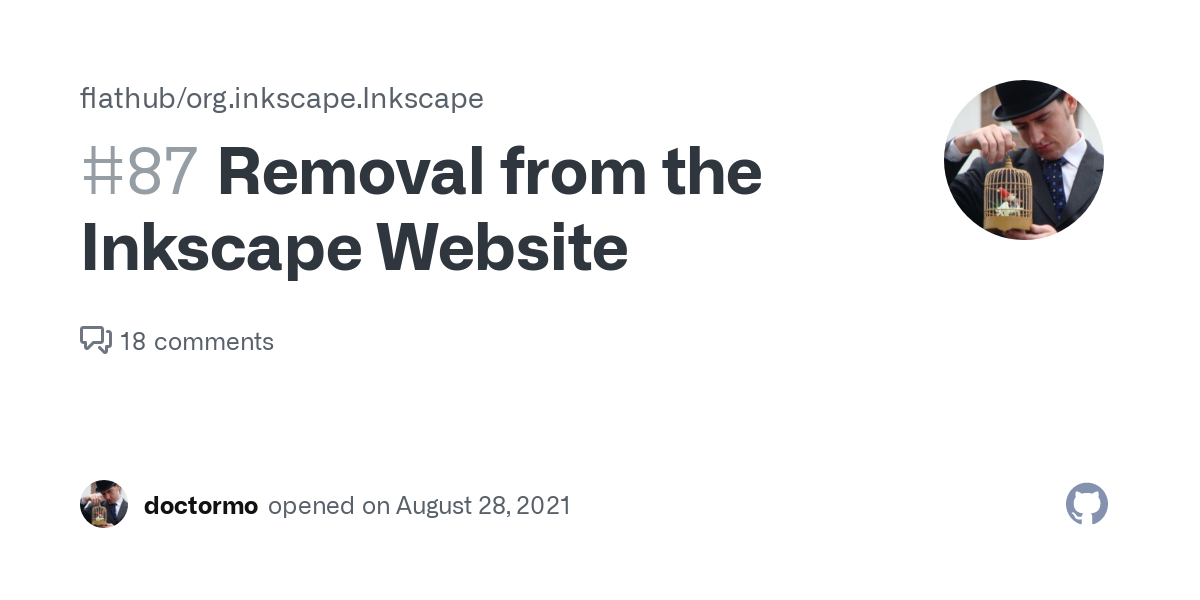The Flatpak is already packaged and works well. It just needs to be maintained from a person that joins the Inkscape community.
This would allow further improvements like Portal support and making the app official on Flathub.
Update: One might have been found!



Hahaha I would call that VERY random. It is problematic that the default xdg directories are hidden.
And I just learned that you can just source scripts into bash and thus being executable or not doesnt matter. What an incredible design flaw… at least this just works with some binaries, I guess?
No the Flatpak Appimage Pool. But a solution to easily package a bunch of files sounds really awesome. I miss that for RPMs, sddm2rpm did this kind of.
Very interesting tool. So this is for appimages but also binaries?
I am a bit confused, especially as they state to prefer official releases, which for me means tarballs.
But a very good concept.
Interesting set of apps you have there. And ironically I have to agree they are small. Flatpak libraries are too huge and the deduplication doesnt work if it us not used for downloads and if there are dozens of runtimes.
A modular approach would be very much needed, instead of a damn KDE runtime that is nearly the entire desktop.
But I have some questions.
Thats not a sandbox, its a nice wrapper for firejail, at least what they write. I only knew some Github issue where they discussed this, and because Appimages require fuse they couldnt be sandboxed with bubblewrap.
Then they say “bubblewrap is used in Flatpak” but no comment if THEY also use it.
Firejail is the setuid binary I talked about, they likely have fixed their security issues but bubblewrap/bubblejail are probably better as they dont need setuid binaries.
If Appimages are possible to sandbox with bubblewrap, that would for sure be cool.
I also found rustysnakes crabjail, dont know the state it is in, but that is a possible candidate for replacing bubblejail.
No idea if Flatpaks can do that. But I would say the biggest issue is that the big vendors just put their appimage on some file server without any data on the sandbox.
Flatpak is way better here, where the sandbox is checked BEFORE apps are successfully submitted. And there are warnings etc.
And, of course, every app is sandboxed, not just a few.
Not the “create new” to my knowledge. That is in
$XDG_TEMPLATES_DIRbut I am currently struggling to make Flatpaks use that.Yes, so is Flatpak. But Appimages were introduced to be Windows-like. Sure there are companies that dont care and publish random rpms on their website too.
But with Appimages that is the only way as there is no real repo. AppMan is a cludge here, bundling together tons of different sources, kind of like Obtainium.
That tool is either completely finished or kind of abandoned.
Interesting, didnt know they have a signature builtin. That would also be useful.
That zsync2 thing explained in AppMan was just like delta updates. If a malicious actor has access to the old appimage and the fileserver, they can produce the correct zsync2 thing and the updates work, until signature verification is enforced.
As I said, as long as
bash script.shworks with nonexecutable stuff, noexec home is pretty worthless. Just another layer of defence.No, android APKs are like Distro packages, they can be sideloaded however you want and then are forwarded to the “session installer” (on modern android), which is the “package manager” of android.
That installer saves the signature somewhere, and from then on you can only update the APK if the signature was made with the same private key.
Found out you can also not sign APKs, which happened here. I honestly dont know if more developers dont sign their APKs.
I will update my repo text to get to the current state of facts.
Anything portable.
aisap uses bwrap it is mentioned in both links I gave you.
appman used to have firejail sandbox but it was dropped in favor of aisap because of that.
Very nice, thanks for the links.
Where do the sandboxing profiles come from? I suppose from the aisap repo?
https://github.com/mgord9518/aisap/blob/main/profiles/profile_database.json